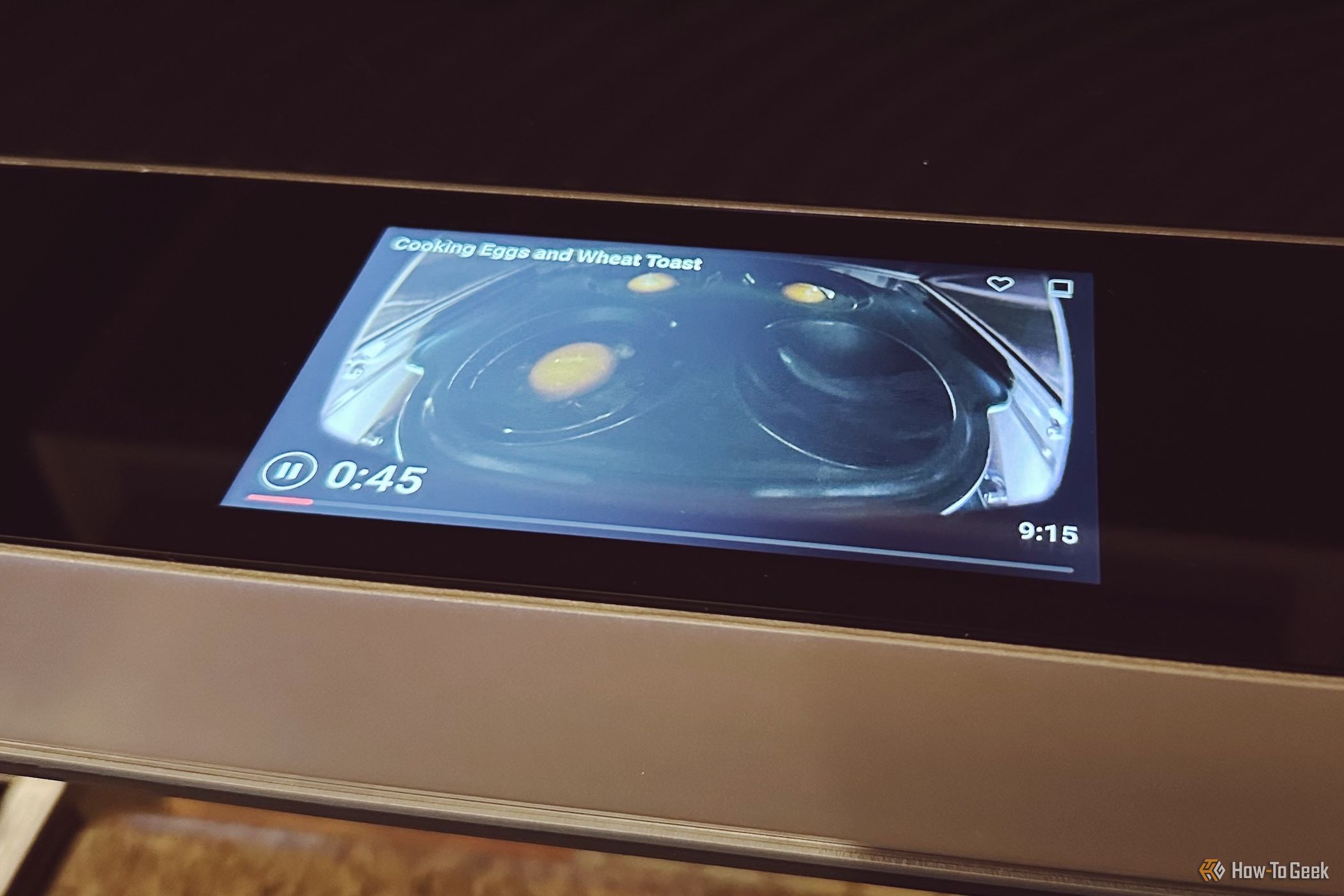Key Takeaways
- The June Oven’s Wi-Fi connectivity, camera, and AI make it stand out from other smart appliances.
- Other smart ovens like the Brava Glass and GE Profile Indoor Smoker fall short in utilizing their technology.
- The future of smart appliances should focus on solving real problems and making cooking easier, with a more intuitive experience.
After more than a decade of testing tech products, the June Oven is the smart home device that rose above the rest. Its Wi-Fi connectivity, integrated camera, and AI make it truly special. Here’s what it got right and how other smart appliances need to kick it up a notch.
Why the June Oven Was Ahead of Its Time
In 2021, Weber Grills acquired June and integrated the tech into its products. The unofficial word from former employees is that there won’t ever be another June Oven. So, knowing that no electric device lasts forever has made me look at the June Oven sitting in my kitchen a little differently in recent days.
Spending a few minutes searching for a Wi-Fi-connected countertop oven leads to plenty of results, but none in 2024 that can fully match what the third-generation June offered when it debuted in 2020.
I’ve tried a lot, and they all lack some of the basic features you would hope for in a connected appliance. For example, the Breville Joule Oven Air Fryer Pro can’t be turned on to preheat without actually pressing a button on the oven itself.
This stands in stark contrast to the June Oven which I can turn on remotely, so that when I head down to put dinner in, it’s heated and ready to go. June will also send me notifications when its cooking timer has one minute remaining and then again when it’s finished. It’s not just “smart,” it’s also helpful.
There are a lot of these convenient touches all across the oven. From having built-in heating programs specifically for Trader Joe’s food to asking if it should alter the preset times. The oven will know if you removed food early and ask if you want to change the previously allotted time.
The way it knows whether food is actually inside the oven is thanks to a camera. This camera is the glue that makes lot of these advanced features work.
For example, my kids only need to stick their breakfast item—waffle, bread, and so on—into the oven for the camera to identify the food and suggest a cooking time and mode. Even if the camera’s promise of helping you cook better meals is a little exaggerated, just having a “presence sensor” of sorts is really helpful.
It’s also how the oven can safely preheat itself, knowing when to shut off if nothing is inside. And even though it’s a bit extra, as in superfluous, the camera also serves to make time-lapse videos of food baking.
What to Look For in Other Smart Appliances
A look at eggs cooking in their special tray on the oven’s top screen.
It was easy to marvel at the June Oven in 2020 because it was early. It seemed like a novelty but one that other companies would catch up to in the not-too-distant future. Unfortunately, years later, it still bests the competition in technology advancement and wasn’t outrageously priced.
The Brava Glass has a camera inside, but you can’t view it from your phone. It also can’t be remotely started from its mobile app. As well as the Brava Glass oven works, it’s also prohibitively expensive at well over $1,000 depending on the features and accessories you want with it.
The GE Profile Smart Indoor Smoker has a lot of the makings of a more technologically advanced appliance but still falls short of June. It needs to be started from the unit after pre-heating has been completed. Its app is also a little complicated, mostly because it needs to work for nearly all of GE’s various connected appliances.
I’m interested in trying the GE Profile UltraFast Smart Air Fry Oven to see if it could be an eventual replacement for June, so watch for that review in the not-too-distant future.
The Future of Smart Appliances Needs to Improve
When I think about needing to eventually replace the June Oven, the loss I prematurely grieve is one of convenience. It uses its tech to solve real problems and make cooking—preparing elaborate meals or just reheating—easier. It removes pain points.
Looking at the landscape, we’re still in a time of adding connectivity to appliances simply for the sake of it. My microwave has Wi-Fi, but the only thing it can do is notify me when the door is left open or if there’s a firmware update available.
I want my connected appliances to be preemptively smart. It’s a genuinely magical experience to stick a piece of food in the June Oven and have it suggest a cook mode and time. Plus, if there is an app and wireless connectivity, then let me fully use it and control the device from my phone.
The future of smart appliances should be a lot more encouraging than it is now. June wasn’t abandoned because it didn’t work, it was bought out by a larger company before it had a chance to fully bloom. Here’s hoping that another upstart comes along and picks up where June left off.





